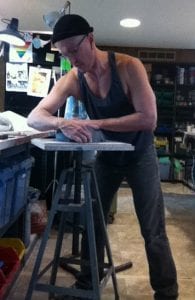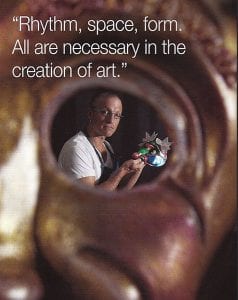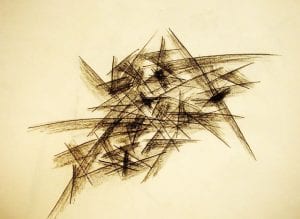Home / Blog Legacy / How Are Theater Masks Made
How Are Theater Masks Made

When looking at the answer to the question, “how are theater masks made?,” one needs to address two aspects of the mask making process and how they affect the final product. The two aspects alluded to here are one; the materials used and how the technical process of using those materials works and two; what it is that separates the theater mask for performance from the mask intended solely as a costume piece. This post will focus on the latter.
The theatre mask for performance is the driving force behind the dramatic event. Niels Peter Underland, the founder of the international study “Acting With Masks” at Akershus University College of Applied Sciences in Oslo, Norway once said, “masks are stories.” What he means by this is that masks are highly sophisticated sculptural forms that have within a perspective on the world that must be found and articulated by the performer. A well-made mask for performance plays in a singular way that is specific to the individual mask. It is the actor’s responsibility to come to the mask and find what is contained within rather than impose outside ideas. This is done much in the same way one would explore a particular text and use the information provided to create interpretation and exploration. The actor must bring him or herself to the mask. Or as Lecoq would articulate, “support the mask.”
A theater mask for performance is a dynamic living form. The rhythmic interplay of the lines and planes of the mask and how they animate the negative space around it create a form that “plays.” What this means is that the mask appears to change expression as it moves through space or as the physical body of the performer moves underneath it. The form of the mask dictates the rhythmic movement and energy needed for performance by the actor. This is reflected in the differences of how various styles and cultural practices of masked theater are performed and experienced. This can be seen in the differences between the Noh, Kyogen, Topeng, Greek Masked Theater, Kabuki, The Commedi dell’Arte as well as various forms of contemporary masked theatre.
A theater mask for performance sees the world from a singular perspective. It’s opinions, its emotional life and it’s reactions to events experienced are all based on the perspective held within the mask. The mask maker creates the perspective through a rhythmic understanding of human emotion and how those manifest in the movement of the human body as it moves through space.
In a mask making workshop the student is first asked to explore through movement human passions such as pride, jealousy, rage, anguish, lust, anger, joy and fear. To quote the 1988 L.E.M Brochure from the Lecoq School,
“Human passions have structures, form; they move at a certain speed, emit sounds, draw back, lean in, pull and push.”

Explorations are focused on finding a specific and singular interpretation of a given passion that has a given form of the body, rhythmic movements, inner space and outer space and how all of these elements interact with one another. The next step in the process involves the student learning to realize these physical and kinesthetic understandings in drawing, painting and sculpture. Then the knowledge gained from arriving at conceptual design and form is transferred to the creation of the expressive mask for performance.
Creating an expressive mask that plays is a particular skill that requires a sophisticated understanding of the body in movement, cultural form, story telling, the body as text, how the human condition manifests in its relationship to others and how these understandings can be realized in the creation of the theater mask.
Check in at TheNalpa.com for upcoming mask making workshops. Like Theater-Masks.com on facebook to see what events are happening at the studio or send me an email to subscribe to the studio newsletter if you are interested in mask making. Just make a mask to see what you come up with!
